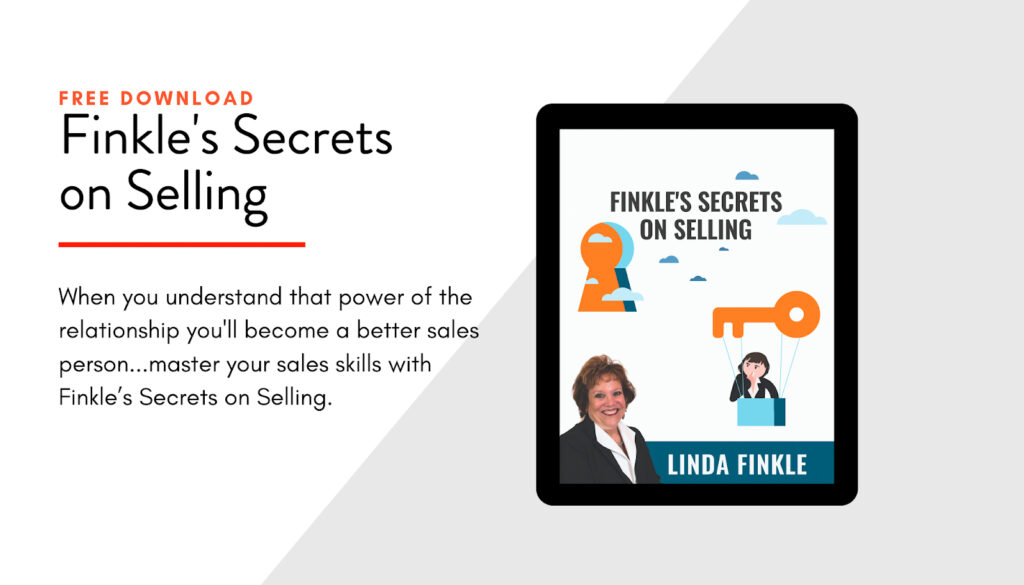You want to sell. You think you have a good product or service and people need it. So how do you get started? You can run around telling people they need what you have to offer, but as any seasoned salesperson will likely tell you…that’s not going to work. Now what?
Well, first you need to know what sales is and what sales isn’t. Sales is just selling stuff, right? Wrong! There is a reason why they call it the ‘sales process’ after all.
Step One: Know Who Your Customer is.
Before you make a sale the first step in the sales process is to identify people or organizations that may need your product or services; in other words, your prospects.
Step Two: What Problems or Needs Do They Have?
Once the prospects have been defined, you need to uncover the potential customer’s needs or problems; a step that is known as need identification.
Step Three: Understand Where They Are Right Now
In the discovery stage, you must ascertain what they have been doing thus far to solve the problem or fill the need.
Step Four: Present Your Solution
Now here’s your chance to present information about your product or service that will solve the problem or need of the customer through features and benefits, negotiating on price, terms and other aspects can be a tricky part of any sales process; but once you do you’re in for the close, the exchange of goods or services.
Knowing what sales are, is a vital step; but you need to be aware of a number of factors that are commonly confused as part of the sales process.
Though it may help you identify prospects, advertising IS NOT a part of the sales process.
For that matter, neither is marketing. Randomly sending sales pieces like brochures, agreements, or other materials to customers or prospects may seem like a part of the sales process…it’s not.
Now you know what sales are and what sales aren’t, but where do you go from here?
Have you ever heard the expression “planning is key”? Well, nothing could be truer when it comes to sales. Solid performers know that planning is an essential sales skill and will make the difference between a mediocre, good, and great year.
Another sales skill is consistency. Of course, if you are planning and executing your plan, you will default be consistent. You are bound to see your sales numbers increase.
Each day, plan your day including who you are going to contact, their contact information, and what you want to say whether on a phone call, an email, or even what message you will leave on their voice mail.
If you’ve contacted them before, have the notes from that contact at hand when you make the call. You do not want to seem under-prepared.
Plan more calls, emails, and appointments than you think you can manage in a day. If you only plan for what you think you can accomplish, you’ll find yourself with extra time at the end of the day. You must assume when making these calls or sending emails that not everyone will be available or respond to you.
Discipline yourself to make ‘X’ number of calls or contacts before doing anything else.
For example, tell yourself you will talk to ‘X’ number of people before taking a break, or spend 90 minutes sending emails or contacting your referral sources before taking a break. Having smaller goals you can reach tends to make tasks seem less daunting.
Set goals or objectives for every call. Examples of possible goals are close the sale, move the process to the next step, get information, arrange another time to talk, etc. Each sales call can be successful if you make it attainable. Even if you walk away from your call with noting but information, it can be deemed a successful sales call.
At the beginning of each day, set a goal for yourself.
I’m going to talk to ‘X’ number of people, I’m going to close a deal, I will set up 2 appointments…whatever is reasonable for you that day. This helps you stay focused but also helps you get closer to your goal with each sales interaction.
How you come across on the phone is as important as what you are trying to sell. Remember, in all sales situations they buy you first, then the product or service. While they may buy based on price, they will not refer you to anyone or come back if they do not enjoy working with you. Think about why you have gotten referrals in the past and/or repeat customers. What did they say when they came back?
An old boss of mine once told me, 20 percent of your sales can’t be closed, 20 percent will happen regardless of what you do. You only have an opportunity to impact the 60 precent in the middle. Thus you can never expect to close 100 percent, though you may be able to increase your percentage to 80.
If you want to improve your sales skills, start by understanding what sales is and what sales isn’t. Then get in the habit of planning. Plan your day, your week, your month. Plan what you are going to say in each sales interaction whether in person, on the phone or email. Sales is a series of steps that ultimately lead you to the end result.
Want More Selling Tips?
I have created a list of my top tips that I have personally used over and over again to become a top salesperson.









